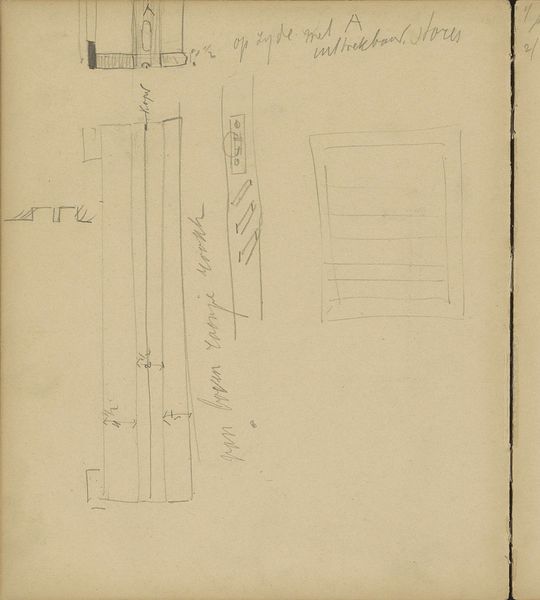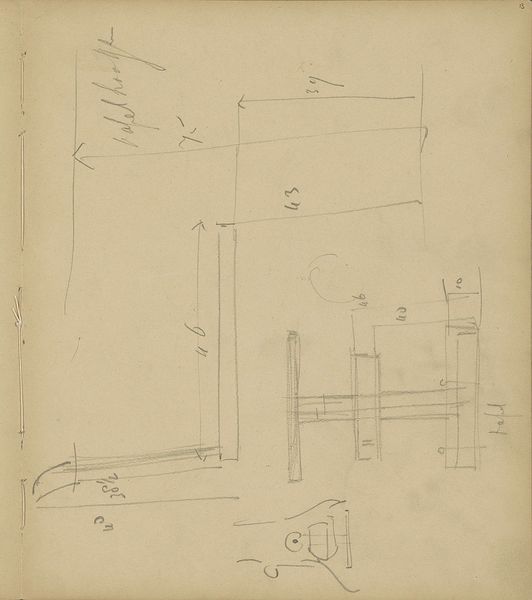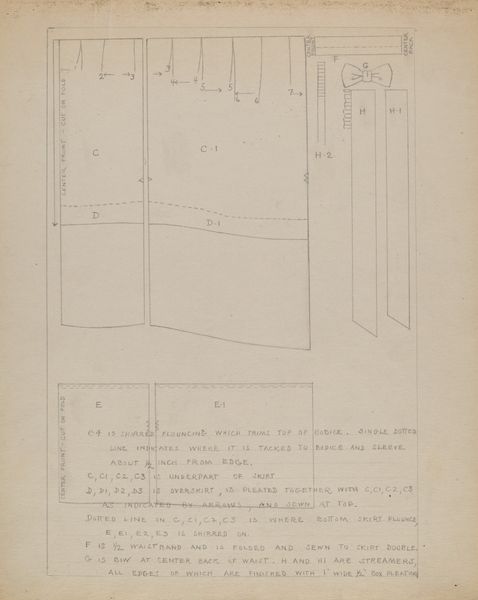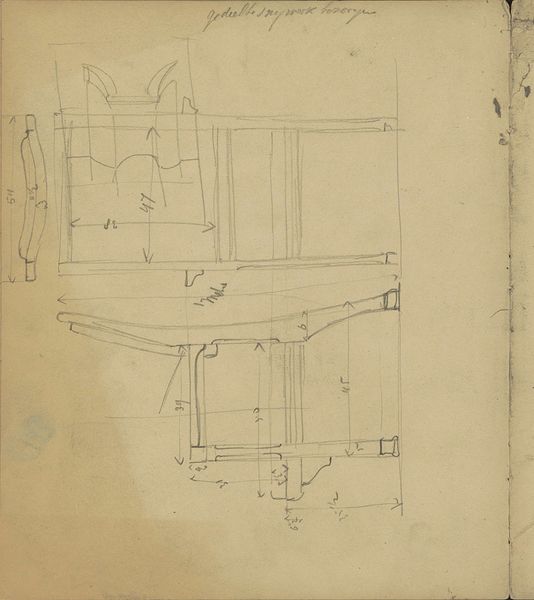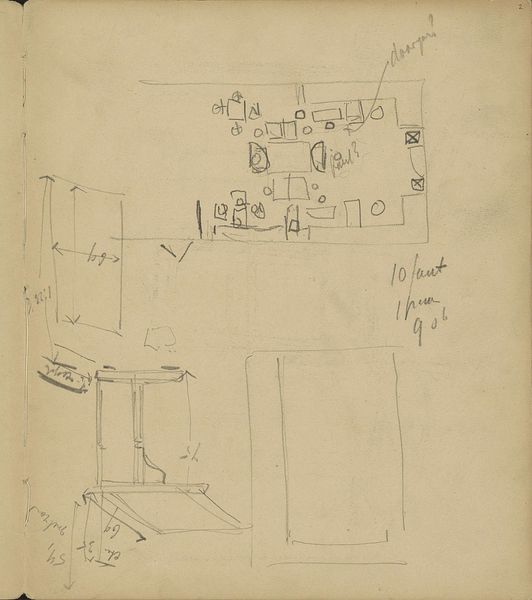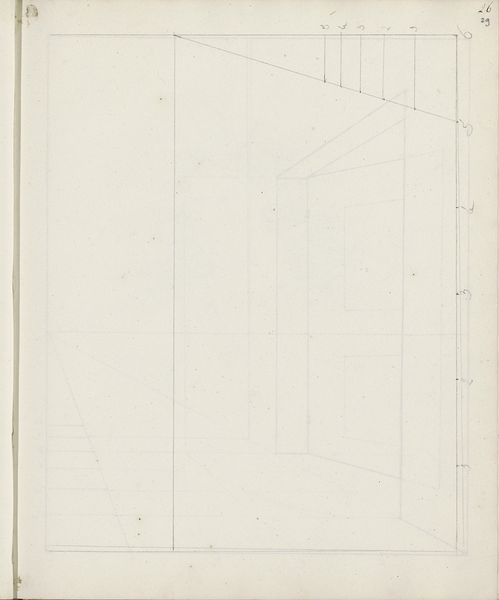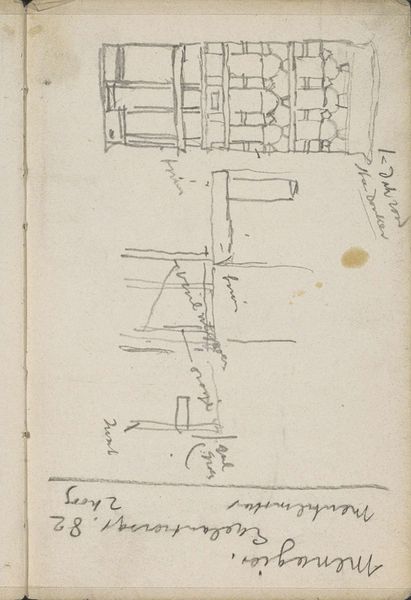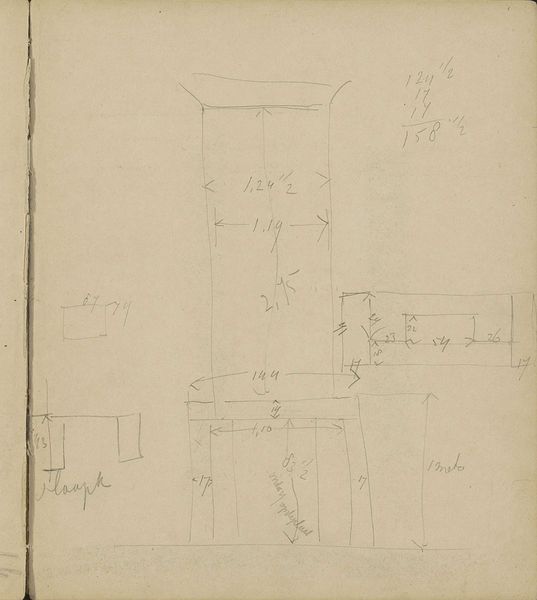
drawing, paper, ink, pen
#
drawing
#
art-nouveau
#
pen sketch
#
paper
#
ink
#
geometric
#
abstraction
#
pen
Copyright: Rijks Museum: Open Domain
Editor: This intriguing pen and ink drawing on paper is titled "Briefkaart aan anoniem," or "Postcard to Anonymous," created sometime between 1892 and 1938 by Richard Nicolaüs Roland Holst. Its simplistic nature piques my curiosity. What do you see in this piece? Curator: Indeed. Immediately, the stark geometry captures my attention. The work is fundamentally about form, and how line defines space. Note the repeated vertical lines, interrupted by the horizontal, creating a series of rectangles, a study in structural organization. Consider how the artist employs hatching in the lower register to create areas of darker tonality, offering a textural contrast to the open expanse above. Editor: The lower section almost appears like a foundation to the taller rectangle. Do you think the calculations on the top right have significance to the overall piece, or are they simply a note? Curator: It is not simply what it depicts but how it is constructed that holds interest. One can ask how these additions contribute to the reading of the picture, if at all, but our focus lies firmly in understanding its structural components. How the interplay between lines affects the aesthetic properties on display, as the spatial relations become the very subject of the work. What if, as suggested, these shapes are the aesthetic experience themselves? Editor: So, we focus not so much on any potential meaning the forms might suggest but how they interact on the page. That's really interesting to consider. I often lean into symbolism, but focusing solely on composition opens up a whole different way of appreciating the piece. Curator: Precisely. Stripping away external narrative allows a more refined engagement with its inherent visual language. We leave the artwork as an aesthetic, semiotic tool.
Comments
No comments
Be the first to comment and join the conversation on the ultimate creative platform.
